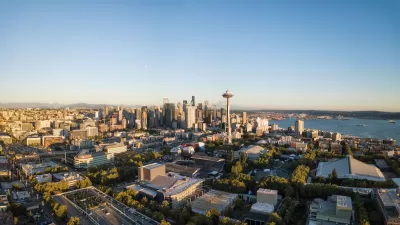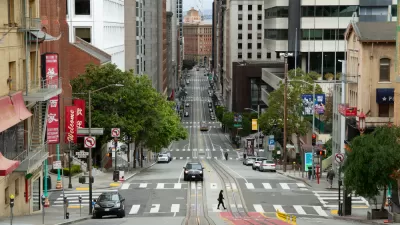In the United States, urban wealth and poverty are often quite segregated. But they can also be next-door neighbors. This article looks at cities with the highest and lowest levels of income inequality.

David A. Arnott reports on data showing which major U.S. municipalities are the most equal, and which are the least. "The Census Bureau calculated inequality in all those areas by the Gini index, which measures the distribution of money in a given place. It's expressed on a scale from zero (everybody in town has the exact same income) to one (a single person in town has all of the income)."
Arnott cites the area around San Francisco's Chinatown as one place where the well-off and the poor live side by side. "The list also contains information about whole cities that may be surprising. Detroit — notorious for its blight, yet with incredibly wealthy pockets scattered throughout — is listed as more equal (0.499) than Pittsburgh (0.521), Houston (0.525), Boston (0.533), Tampa (0.533), and other cities that don't have nearly that kind of reputation."
The most unequal cities tend to be larger by population and land area, embracing a wider variety of neighborhoods. "The American big city (population greater than 100,000) with the most income inequality, by far, is Atlanta (0.583). At the other end of the spectrum, West Jordan, Utah (0.330), has the most income equality."
FULL STORY: Unequal cities: Where rich and poor live within blocks of each other

Maui's Vacation Rental Debate Turns Ugly
Verbal attacks, misinformation campaigns and fistfights plague a high-stakes debate to convert thousands of vacation rentals into long-term housing.

Planetizen Federal Action Tracker
A weekly monitor of how Trump’s orders and actions are impacting planners and planning in America.

In Urban Planning, AI Prompting Could be the New Design Thinking
Creativity has long been key to great urban design. What if we see AI as our new creative partner?

King County Supportive Housing Program Offers Hope for Unhoused Residents
The county is taking a ‘Housing First’ approach that prioritizes getting people into housing, then offering wraparound supportive services.

Researchers Use AI to Get Clearer Picture of US Housing
Analysts are using artificial intelligence to supercharge their research by allowing them to comb through data faster. Though these AI tools can be error prone, they save time and housing researchers are optimistic about the future.

Making Shared Micromobility More Inclusive
Cities and shared mobility system operators can do more to include people with disabilities in planning and operations, per a new report.
Urban Design for Planners 1: Software Tools
This six-course series explores essential urban design concepts using open source software and equips planners with the tools they need to participate fully in the urban design process.
Planning for Universal Design
Learn the tools for implementing Universal Design in planning regulations.
planning NEXT
Appalachian Highlands Housing Partners
Mpact (founded as Rail~Volution)
City of Camden Redevelopment Agency
City of Astoria
City of Portland
City of Laramie





























